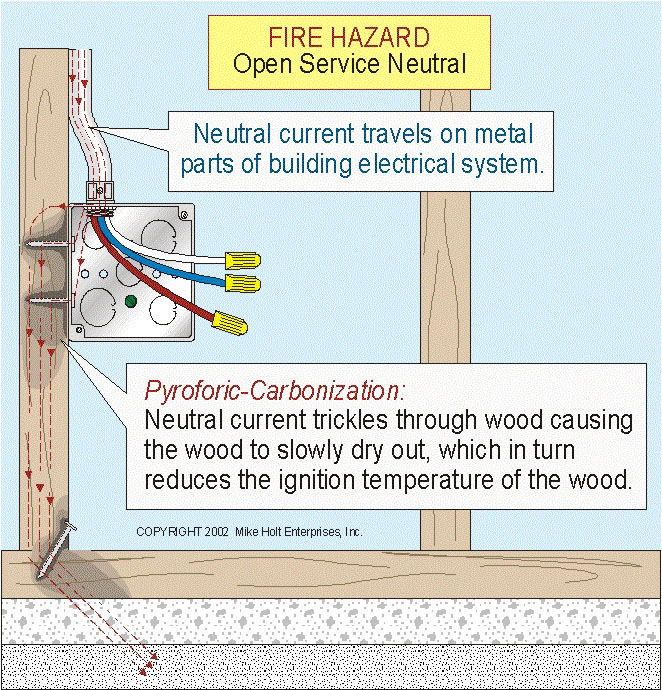e57
Senior Member
- Location
- San Francisco, CA
I beg to differ - the back woods personnel dominating the solar PV industry are the actual "pioneers" in the industry unfortunate to say - (At least in CA) Back woods green types and off the grid types are unfortunately very well established in the solar market - what the problem is - the methods and education they have been allowed for the last 20 years are not acceptable for most urban or suburban areas away from camp sites....Looking over some of the posts in this thread, I'd like to point out something. Just like there are hack electricians, there are certainly hack solar installers. (They seem to be coming out of the wood work these days).
It's changed - and IMO not enough - but due to licensing, and more stringent inspection and criticism.The solar industry in the last 5 years in CA has changed pretty radically. Many of the items people mentioned have been addressed by code sections, knowledgeable inspectors and manufacturers updating there products . (I.e. Modules use USE-2 wire which is Sunlight resistant, Conduit is required where exposed to physical damage).
Additionally legit solar installers just like electricians understand that a product must not only be listed but must be used as listed. Homemade combiners are hack or homeowner installs.
Most of the listed items used with solar are new products, and previously where 'made' - and some cases still 'made' due to non-availability Of the topic of combiner boxes - I had a conversation with a solar guy on one job about his 'listed' box... It was listed - as a NEMA 3 box... Which is what everything was installed in... A few buss bars, and some labels... It's still a j-box.
Fuses - may protect against short circuit but not 'every' fault. Carbonized wood becoming a current path due to cuts in insulation, water paths of current. Fuses, and even the location of fuse may have little or no effect for that situation.I was talking with my boss about the particular installation mentioned in the article. It seems like a listed flush roof mounted fused DC combiner would be the simplest solution. It would protect against DC faults inside a structure.
The article - the fire was it seems like it started in what looks to be one of if not both inverters by wiring that is no longer in the enclosure...
http://www.nctimes.com/business/article_8a32fb03-9e3f-58ca-b860-9c7fe1e28c7e.html?mode=image&photo=2
Much of this seems to be without OCP at all - or means of disconnect.
http://www.nctimes.com/business/article_8a32fb03-9e3f-58ca-b860-9c7fe1e28c7e.html?mode=image
(Yes that's an aluminum ladder there in the picture...)
I doubt it would disconnect itself in many of the fault types that would present a hazard, and certainly not render the system safe enough to conduct fire fighting operations with say water... On the structure, and unless the voltage and capacity is reduced it would be a hazard to personnel.(Fusing) While this would not provide a Firefighter the ability to "Disconnect" the system, an array could "disconnect" itself if compromised. As far as I am aware this is not currently required by any NEC code section.
As far as the NEC/CEC
690.5 Ground-Fault Protection.
Roof-mounted dc
photovoltaic arrays located on dwellings shall be provided
with dc ground-fault protection to reduce fire hazards.
(A)
Ground-Fault Detection and Interruption. The
ground-fault protection device or system shall be capable
of detecting a ground fault, interrupting the flow of fault
current, and providing an indication of the fault.
(B)
Disconnection of Conductors. The' ungrounded
conductors of the faulted source circuit shall bepennitted to interrupt the ground-fault current path.
automatically disconnected. If the grounded conductors of
the faulted source circuit are disconnected to comply with
the requirements of 690.5(A), all conductors of the faulted
source circuit shall be opened automatically and
simultaneously. Opening the grounded conductor of the
array or opening the faulted sections of the array shall be
The code should IMO elaborate on where this GFI device is located... That fire article didn't look like it had any.... And if it's contained in the inverter - that's the last point for it and does little to protect much would it...
And as far as disconnects - the more I look at 690 - the more I think that they are already required... I'd like to see if some more forum members with more experience in 690 have any opinions on that?
And as far as disconnects - the more I look at 690 - the more I think that they are already required... I'd like to see if some more forum members with more experience in 690 have any opinions on that?


